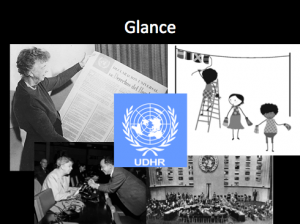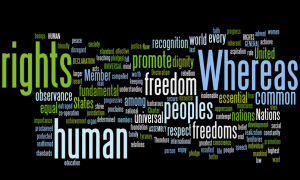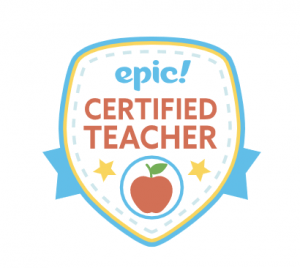On Saturday, November 2, 2013, I will be presenting a Teacher Inquiry Workshop (TIW) for the Hudson Valley Writing Project Saturday Seminar at SUNY New Paltz. The theme for the day is “Commanding the Core: Helping Students Become Attentive Readings, Writers and Thinkers.” The day is designed for elementary and secondary teachers who would like to strengthen literacy instruction in their own classrooms. Presenters will share ways to build students’ interpretive and analytical skills so that they can write effectively and persuasively—mastering the skills set forth in the Common Core Learning Standards. With this goal in mind, the title and description of my TIW are: “A G.L.A.N.C.E. at Shift #3: Leveraging Digital Media to Create a Staircase of Complexity,” How can the use of digital media create more time, space and support in a curriculum for close reading? Participants will examine how multi-modal “texts” can be used to support reading and provide a scaffold for students as they explore a central, grade-appropriate text. We’ll also consider how the use of digital media impacts the reading process for students (Grades 3-12).
So what is G.L.A.N.C.E? It is a protocol that leverages multi-media to differentiate the format of a text so students can utilize diverse learning styles to engage in close reading. G.L.A.N.C.E. is an acronym for
G = Glance
L = Listen
A = Annotate
N = Notice
C = Create
E = Evaluate.
I designed the protocol to support the implementation of the first module in the NYS ELA Common Curriculum for grades 3 – 5. The example I am using is based on the first module in the 5th grade for the study of the preamble of the Universal Declaration of Human Rights. I designed a template that students can use to record their responses at each stage of the protocol. Then I provided a series of multi-modal texts and activities for student engagement through writing. Below you will find the steps, texts, and activities related to the UDHR:
G = Glance
Students look at a series of images that are related to the UDHR. Some of images included are photographs of Eleanor Roosevelt holding the document, the floor of the United Nations, Eleanor Roosevelt talking to a dignitary, a drawing of children hanging flags, and the UN logo. Students look at the images and write what they see in the first column of the template (literal).
L = Listen
Students listen to a recording of the preamble of the UDHR. The first time they listen to the recording (thank you to LibriVox) they write what they hear, i.e. the actual words they hear (literal). The second time they listen to the recording they also follow along with the text. In the template they record what they hear, what they think about the text, their general impressions, etc. (inferential).
A = Annotate
Annotation is a key component of close reading. This may include the following activities while reading:
- Making brief comments in the margins or between the lines
- Circling, underlining, or highlighting (sparingly) words or phrases
- Connecting words or phrases with lines or arrows.
As the students read the preamble to the UDHR, they should have a conversation with the text. Students may ask questions, comment on the words or format of the text, note how the author uses language, respond to the emotions that surface as they read, and/or connect ideas to other texts or their own life (inferential).
N = Notice
Students will look at a word cloud of the preamble (that I created using wordle.net). Students need to draw inferences from the word clouds that logically follow from what they have read, heard and seen. For example, why are some words larger than others? Did they expect these words to be larger? What does this tell us about the text?
C = Create
Students play with the vocabularies and create something from the text. In this example, students use the words they underlined, highlighted, or circled while they annotated and use these words to create a “Found Poem.” Found poems take existing texts and refashion them, reorder them, and present them as poems. The literary equivalent of a collage, found poetry is often made from newspaper articles, street signs, music lyrics, speeches, letters, or even other poems. Students write their found poem in the template.
See student examples below:
Example 1:
Human family is the foundation of freedom, justice, and peace in the world. Human beings shall enjoy freedom of speech and belief and freedom from fear and, want (sp?) has been proclaimed as the high aspiration of common people.
Example 2:
Enjoy freedom of speach and belief and freedom of fear.
Promote the development of friendly relations between nations.
Justice and peace in the world!
E = Evaluate
Students evaluate their annotation and what they have written in the preceding columns of the template. They answer the following questions:
- What did you learn?
- Look at your chart. What do you see that is similar in each part? What do you see that is different?
After they answer the questions they write three things they learned from the process, by re-reading their annotations, examining patterns and repetition in the text and in their notes, and ultimately determine possible meanings.
Feedback from teachers on the use of the protocol has been positive to date. They find that students are more engaged with the multi-media texts and are able to draw conclusions as a result of “playing” with the language. To date I have not completed a formal study of reading comprehension as a result of using the protocol and I am still collecting feedback. I will update the blog with feedback from the TIW tomorrow!




November 2, 2013 at 5:12 pm
I had a great morning reviewing G.L.A.N.C.E. with 15 educators from the Hudson Valley. I only wish we had more time! Everyone was very enthusiastic and shared comments about using the protocol with their students. One participant commented, “I would love to use this with Shakespeare in my classroom. It would help all students make connections to the text.” Participants were very positive about the use of word clouds to help analyze text and to provide a different view of the text.
We only had a short time to look at student work (which is a hallmark of the Writing Project), but participants made the following observations:
1. Students were more active and involved with “Create” versus “Evaluate.”
2. It seems that students may need modeling to evaluate their learning, as this column of the students’ template did not contain a lot of information.
3. The process of creating a found poem allows the students to re-mix content in a way that is very natural to today’s learners.
4. Students demonstrated more use of vocabulary as they moved through the process.
One of the pieces I struggle with is the positioning of the word cloud in the protocol. I am thinking it should be used sooner, and instead of an image collage for “Glance,” it might be better to use the word cloud, which is really a word collage. By using the word cloud earlier in the process, students would get an immediate visualization of the vocabularies present in the document and the frequency of the words. Then what would I use for Notice? Does it make sense to use images at this point in the process, or could I possibly use video instead of still images?
Thank you for all of the feedback! I look forward to tweaking the protocol and observe the impact it has on student engagement with text.
Please post any observations you have and also share your experiences if you try it in your classrooms.